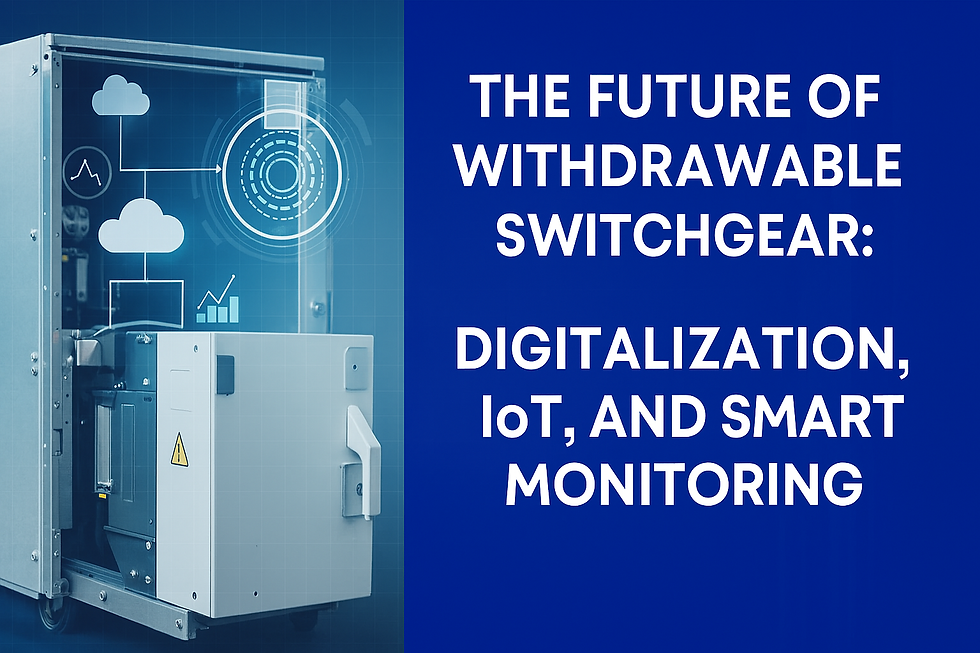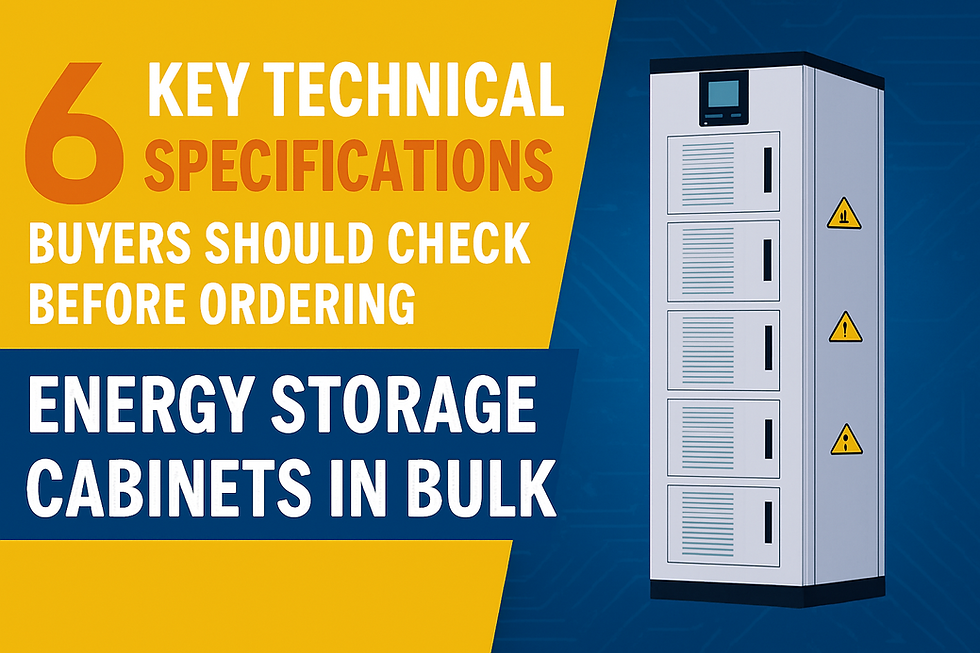Energy Storage Cabinets' Role in EV Charging Stations
- bzpowereq
- May 12
- 4 min read

Introduction
The rapid adoption of electric vehicles (EVs) has increased demand for efficient and reliable charging infrastructure. However, traditional charging stations often face challenges such as grid instability, high operational costs, and limited integration with renewable energy sources. Energy storage cabinets have emerged as a solution to these issues, offering numerous benefits that enhance the performance and sustainability of EV charging stations.
Understanding Energy Storage Cabinets
Energy storage cabinets store electrical energy for later use, typically using battery technologies such as lithium-ion. These cabinets can be integrated into EV charging stations to provide a buffer between the grid and the charging infrastructure. Key components include:
Battery Modules: Store electrical energy.
Battery Management System (BMS): Monitors and controls battery performance.
Inverters: Convert stored DC power to AC power for EV charging.
Cooling Systems: Maintain optimal operating temperatures.
Types of energy storage systems include:
On-grid Systems: Connected to the primary power grid.
Off-grid Systems: Operate independently of the grid.
Hybrid Systems: Combine on-grid and off-grid capabilities.
Benefits of Energy Storage Cabinets in EV Charging Stations
Enhancing Grid Stability
Energy storage cabinets help stabilize the grid by storing excess energy during low-demand periods and supplying it during peak demand. This load balancing reduces strain on the grid and minimizes the risk of outages.
Reducing Operational Costs
By utilizing stored energy during peak hours, charging stations can avoid high electricity rates, leading to significant cost savings. Additionally, energy storage can reduce demand charges imposed by utilities.
Supporting Fast Charging
Fast charging requires high power levels, which the grid can struggle to consistently supply. Energy storage cabinets can boost the necessary power, ensuring quick and reliable charging for EV users.
Integrating Renewable Energy
Energy storage systems enable the integration of renewable energy sources like solar and wind by storing generated energy when production is low or demand is high. This promotes a cleaner and more sustainable energy ecosystem.
Ensuring Energy Resilience
In areas with unreliable grid connections, energy storage cabinets serve as a backup power source, ensuring the charging station's continuous operation even during outages or fluctuations.
Optimizing Energy Use
Advanced energy management systems can control storage cabinets' charging and discharging cycles, optimizing energy use based on real-time demand and pricing, further enhancing efficiency and cost-effectiveness.
Case Studies
Revel's Superhub in Brooklyn
Revel, an electric mobility company, partnered with BZ Power EQ to incorporate energy storage at its charging superhub in Brooklyn, New York City. This initiative aims to optimize the economics of EV charging by reducing demand charges from utilities based on maximum power use. The batteries will reduce peak power by up to 500 kW, equivalent to powering 500 homes.
Electrify America's Energy Storage Integration
Electrify America, a Volkswagen subsidiary, has integrated energy storage systems into its charging network to manage demand peaks and reduce operational costs. By doing so, the company navigates the complex array of electricity rate structures imposed by over 200 utility companies and varying state and local government regulations.
Challenges and Considerations
Installation and Maintenance Costs
The initial investment for energy storage systems can be substantial, including costs for equipment, installation, and integration. Ongoing maintenance is also necessary to ensure optimal performance and longevity.
Regulatory and Policy Hurdles
Navigating the regulatory landscape can be complex, with varying regional policies and incentives. Compliance with safety standards and grid interconnection requirements is essential.
Technological Limitations
Battery technologies have limitations, such as degradation over time and limited storage capacity. Continuous advancements are needed to improve performance and reduce costs.
Future Outlook
The integration of energy storage cabinets in EV charging stations is expected to grow, driven by advancements in battery technologies, decreasing costs, and supportive policies. Innovations such as second-life batteries, vehicle-to-grid (V2G) capabilities, and AI-driven energy management systems will further enhance the benefits and adoption of energy storage solutions in the EV charging infrastructure.
Conclusion
Energy storage cabinets play a crucial role in enhancing the efficiency, reliability, and sustainability of EV charging stations. By addressing challenges related to grid stability, operational costs, and renewable energy integration, these systems are essential for the continued growth and success of the electric vehicle ecosystem. As technology advances and adoption increases, energy storage will become integral to EV charging infrastructure worldwide.
Commonly Asked Questions
What are energy storage cabinets in EV charging stations?
Energy storage cabinets are systems that store electrical energy, typically using batteries, to provide power to EV charging stations. They help manage energy flow, reduce costs, and enhance reliability.
How do energy storage cabinets improve grid stability?
By storing energy during low-demand periods and supplying it during peak demand, energy storage cabinets balance the load on the grid, reducing strain and minimizing the risk of outages.
Can energy storage cabinets reduce charging costs?
Yes, charging stations can lower operational costs and avoid demand charges by utilizing stored energy during peak hours when electricity rates are higher.
Do energy storage cabinets support fast charging?
Absolutely. They provide the high power levels required for fast charging, ensuring quick and efficient service for EV users.
How do energy storage cabinets integrate with renewable energy sources?
They store excess energy from renewable sources like solar or wind, allowing charging stations to use clean energy even when production is low or demand is high.
What are the challenges of implementing energy storage cabinets?
Challenges include high initial costs, maintenance requirements, regulatory compliance, and technological limitations such as battery degradation and limited storage capacity.




Comments